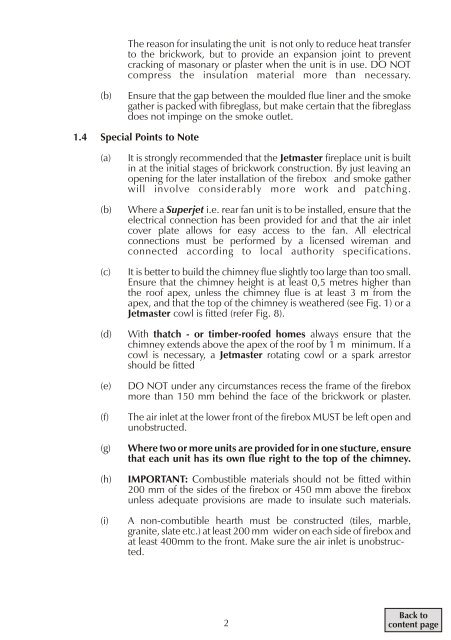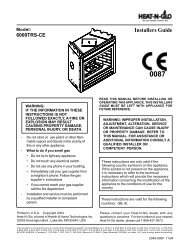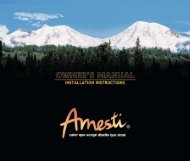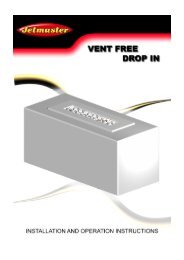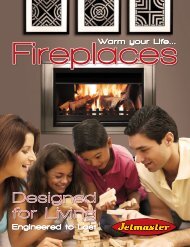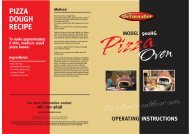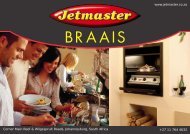installation & operating instructions - Jetmaster
installation & operating instructions - Jetmaster
installation & operating instructions - Jetmaster
Create successful ePaper yourself
Turn your PDF publications into a flip-book with our unique Google optimized e-Paper software.
The reason for insulating the unit is not only to reduce heat transfer<br />
to the brickwork, but to provide an expansion joint to prevent<br />
cracking of masonary or plaster when the unit is in use. DO NOT<br />
compress the insulation material more than necessary.<br />
(b) Ensure that the gap between the moulded flue liner and the smoke<br />
gather is packed with fibreglass, but make certain that the fibreglass<br />
does not impinge on the smoke outlet.<br />
1.4 Special Points to Note<br />
(a) It is strongly recommended that the <strong>Jetmaster</strong> fireplace unit is built<br />
in at the initial stages of brickwork construction. By just leaving an<br />
opening for the later <strong>installation</strong> of the firebox and smoke gather<br />
will involve considerably more work and patching.<br />
(b) Where a Superjet i.e. rear fan unit is to be installed, ensure that the<br />
electrical connection has been provided for and that the air inlet<br />
cover plate allows for easy access to the fan. All electrical<br />
connections must be performed by a licensed wireman and<br />
connected according to local authority specifications.<br />
(c) It is better to build the chimney flue slightly too large than too small.<br />
Ensure that the chimney height is at least 0,5 metres higher than<br />
the roof apex, unless the chimney flue is at least 3 m from the<br />
apex, and that the top of the chimney is weathered (see Fig. 1) or a<br />
<strong>Jetmaster</strong> cowl is fitted (refer Fig. 8).<br />
(d) With thatch - or timber-roofed homes always ensure that the<br />
chimney extends above the apex of the roof by 1 m minimum. If a<br />
cowl is necessary, a <strong>Jetmaster</strong> rotating cowl or a spark arrestor<br />
should be fitted<br />
(e) DO NOT under any circumstances recess the frame of the firebox<br />
more than 150 mm behind the face of the brickwork or plaster.<br />
(f) The air inlet at the lower front of the firebox MUST be left open and<br />
unobstructed.<br />
(g) Where two or more units are provided for in one stucture, ensure<br />
that each unit has its own flue right to the top of the chimney.<br />
(h) IMPORTANT: Combustible materials should not be fitted within<br />
200 mm of the sides of the firebox or 450 mm above the firebox<br />
unless adequate provisions are made to insulate such materials.<br />
(i) A non-combutible hearth must be constructed (tiles, marble,<br />
granite, slate etc.) at least 200 mm wider on each side of firebox and<br />
at least 400mm to the front. Make sure the air inlet is unobstructed.<br />
2<br />
Back to<br />
content page


